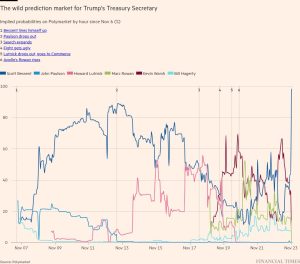How cold warriors used hard science
Last week, a Nasa spacecraft set off for Europa, one of Jupiter’s moons, in search of signs of life beneath the moon’s icy crust. The previous day, SpaceX engineers caught a booster rocket with mechanical arms on its return from a test flight, potentially making interplanetary travel easier than ever. Space exploration has been much in the news this month — but, as two new books remind us, it also gripped the public’s imagination at the height of the cold war.
In 1962 Venus became the first planet in our solar system to receive a radio message from Earth. Transmitted from a Soviet radar complex, it consisted of three words in Russian: “Peace, Lenin, USSR.”
Well might we wonder what the little green inhabitants of Venus, had there been any, would have made of this. But the message was not really aimed at extraterrestrials. Rather, as a triumphant article in the Soviet armed forces newspaper Krasnaya Zvezda made clear, it was intended to demonstrate to people on Earth “a new victory for Soviet science and technology”.
In Mixed Signals, Rebecca Charbonneau tells this story as a way of illustrating that, during the cold war, US and Soviet efforts to communicate with aliens in space were as much about superpower competition on Earth as about locating those elusive beings. A historian at the American Institute of Physics, Charbonneau has written a well-researched and splendidly entertaining account of humanity’s search for alien life in the era of the US-Soviet “space race”.

The other book under review, Ines Geipel’s Beautiful New Sky, draws attention to the darker side of science in the cold war. She exposes the highly secretive programmes in communist East Germany in which researchers conducted risky, even cruel experiments on humans and animals to find ways of enabling cosmonauts to endure long-distance space travel.
At one level, Charbonneau’s book is a heartening tale. Despite their ideological and geopolitical rivalry, the US and the Soviet Union often co-operated from the 1960s to the cold war’s end in the late 1980s in an effort to discover and communicate with extraterrestrial life. Scientists such as Carl Sagan, the American astronomer and author, and Iosif Shklovsky, his Soviet Ukrainian friend and opposite number, thought they were engaged in a common quest that transcended national identity.
As Charbonneau explains, there were good practical reasons for such collaboration. Earth’s rotation meant that continuous observation of an extraterrestrial source with ground-based telescopes was impossible from one country alone.
However, the space race and the search for aliens always had a military dimension. The powerful signals detection and analysis capabilities of the equipment used in this search made them ideal for military surveillance in deep space, Charbonneau says.
Sometimes the search had embarrassing consequences. In 1965 Tass, the official Soviet news agency, reported the potential discovery of an alien supercivilisation on the radio star CTA-102. This inspired the Byrds, one of the era’s biggest rock groups, to write a song about it. But there were no aliens — CTA-102 is just one of more than 1mn quasars (highly luminous galactic cores) so far discovered in the universe.
Charbonneau trawls thoroughly through the available records to tell her story, but acknowledges future historians will probably find out more. When she visited Russia in 2019, she says, she “was unable to access a single scientific archive”. Under President Vladimir Putin, Soviet-style secretiveness and suspicion of foreigners are back with a vengeance.

Geipel, a former sprinter and long jumper who was one of thousands of victims of East Germany’s covert doping of athletes, has produced a powerful, at times deeply moving book about that now defunct state’s sinister involvement in space research. She provides an important corrective to recent revisionist accounts of East Germany as a place where life wasn’t so bad after all, even though the regime was a communist dictatorship marked by the omnipresence of the Stasi secret police and slavish loyalty to the Soviet Union.
As Geipel writes, the great myth was that everything East Germany did was for the cause of progress and peace. “Even after 1989, this myth was able to survive, remain intact and even regenerate itself in the face of all sources that indicated a different story,” she says.
East Germany’s research on human endurance was a militarised effort, with the Stasi’s keen involvement, from start to finish. The goal was to forge “a clear path towards a New Man created through complex chemical substances”, Geipel writes. Researchers realised that anabolic steroids — also used to dope athletes — could combat muscular atrophy in space.
Experiments with neuropeptides — tiny chemical messengers — were designed to remap the limits of human existence, improving the body’s ability to withstand extreme heat, cold, exhaustion, loneliness and mental disorientation. Speech analysis devices intended to analyse cosmonauts’ psychological state were of especial interest to the Stasi, as they could also be used to monitor critics of communism.
In all this, western countries were not entirely blameless. After Germany’s reunification in 1990, investigators discovered that almost half of 35 doping substances used in the east’s sports laboratories had originated in the west. Moreover, as Charbonneau reminds us, the CIA conducted experiments on humans with mind-bending drugs such as LSD.
Both books make clear that science can be turned to terrible as well as noble purposes. If there are indeed aliens somewhere in the universe, perhaps they too know that.
Mixed Signals: Alien Communication Across the Iron Curtain by Rebecca Charbonneau Polity £25, 256 pages
Beautiful New Sky: Fabricating Bodies for Outer Space in East Germany’s Military Laboratories by Ines Geipel Polity £20, 178 pages
Tony Barber is the FT’s European comment editor
Join our online book group on Facebook at FT Books Café and subscribe to our podcast Life and Art wherever you listen
#cold #warriors #hard #science




